Youth Care Treatment Center and school has helped teens with reactive attachment disorder all over the United States for 30 years. Our unique approach is based off of solid morals and beliefs to help adolescents be successful in turning their lives around.
Understanding Reactive Attachment Disorder
Learn about reactive attachment disorder
Reactive attachment disorder (RAD) is a mental health condition that has origins in infancy and early childhood. The beginning of this illness comes from poor attachment from caregivers when a child is not able to care for him or herself because of his or her age. The bond that children and their caregivers develop during early development is critical in that this phase of life is when one learns what it means to be safe, emotionally connected, and physically cared for by others. When a child does not have these early experiences, he or she can then develop the perception that others cannot be relied on for care or comfort, which can lead to unhealthy behaviors in response.
Children and adolescents with this mental health condition might fail to thrive or function in a healthy manner. In addition, as a child gets older, he or she might not be able to form meaningful relationships with others as the fear of rejection or hostility from others becomes overwhelming. When treatment is obtained for RAD, a young individual can learn the skills that can help him or her form positive relationships with others and prepare him or her for a life that is not compromised by the presence of this condition. While the events that led to the development of this disorder cannot be changed, treatment can help improve the lives of those with RAD.
Statistics
Reactive attachment disorder statistics
It is believed that fewer than 10% of children and adolescents battle RAD. However, this percentage may not be accurate due to the rarity of this disorder and because not every youth with RAD receives treatment. It is known that children who have a history of living in orphanages or other early institutional living are at a greater risk for developing RAD.
Causes and Risk Factors
Causes and risk factors for reactive attachment disorder
Researchers believe that the following causes and risk factors may explain the development of reactive attachment disorder:
Genetic: Experts in the field of child development report that specific genetic influences can impact the onset of RAD symptoms. For instance, a family history of personality disorders can cause children to be more vulnerable to developing RAD.
Physical: Poor attachment or lack of attachment with caregivers can lead to hindered brain development, primarily in the areas that are responsible for one’s personality. Children who have RAD are known to have structural differences within their brains, as evidenced by brain comparisons between children with RAD and children without RAD.
Environmental: Experts in the field of mental health feel strongly that one’s environment during early childhood significantly impacts whether or not he or she will struggle with RAD in the future. When a child is neglected in a way that denies him or her physical closeness, emotional connectivity, and proper care for his or her needs, there is a greater chance that RAD will develop. It is necessary for children to have healthy attachment and a sense of safety from caregivers, however, when a child lacks these factors, he or she might struggle to form attachments with others. Additionally, those who are abused or endure trauma are also at risk for developing RAD when they are not comforted during their fearful experience or lack the appropriate coping skills to persevere through said experience.
Risk Factors:
- Experiencing significant changes with a primary caregiver
- Growing up in an institutional setting
- Moving amongst multiple foster homes
- Being forcefully removed from an abusive or neglectful home
- Having a mother who suffers from severe postpartum depression
- Enduring various types of trauma
- Being socially neglected
Signs and Symptoms
Signs and symptoms of reactive attachment disorder
Depending on the circumstances surrounding one’s early childhood development, the signs and symptoms of this mental illness can be extensive and impact many areas of one’s life. Below are some behavioral, physical, cognitive, and psychosocial symptoms that a child might experience when RAD is present:
Behavioral symptoms:
- Refusing to interact with peers
- Participating in self-soothing behaviors
- Turning or leaning away from someone who is trying to show affection
- Minimal social responsiveness to others
- Inability to, or refraining from, making eye contact
- Presenting as calm when alone as opposed to when other people are present
Physical symptoms:
- Failing to gain weight
- Looking joyless
- Appearing listless
- Not smiling
Cognitive symptoms:
- Cognitive delays
- Other developmental delays
- Language delays
- Delayed responsiveness to stimuli
Psychosocial symptoms:
- Low self-esteem
- Lacking the ability to trust others
- Experiences difficulty with, or is incapable of, being comforted
- Ongoing feelings of being unsafe
- Lacking a sense of belonging
- Sadness
- Anxiety
- Fearfulness
- Irritability
Effects
Effects of reactive attachment disorder
The symptoms of RAD, which can negatively impact a child’s social and emotional development, can cause a number of effects to occur if treatment is not obtained. The following are some examples of the many effects that can occur when symptoms of this disorder are not addressed:
- Poor attachment with caregivers, peers, and/or other individuals
- Development of additional mental health concerns
- Social isolation
- Poor academic performance
- Underdeveloped language skills
- Cognitive delays
- Developmental of medical concerns
Co-Occurring Disorders
Reactive attachment disorder and co-occurring disorders
Struggling with a condition like reactive attachment disorder can cause a young person to struggle with other mental health conditions at the same time. The following are among the mental health disorders that can exist alongside RAD:
- Depressive disorders
- Language disorder
- Stereotypic movement disorder









